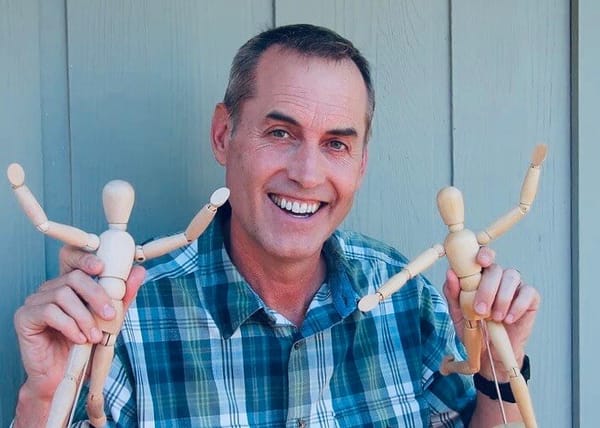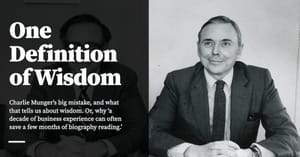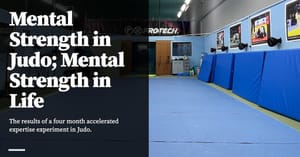Yesterday, I published a summary of Charles Duhigg’s The Power of Habit, arguing that a self-interested reader would do better to read my summary and then go sign up for BJ Fogg’s Tiny Habits course. I said, in the conclusion of that piece:
I’ll reiterate my advice from earlier: if you’ve read this far in my post, go apply these new ideas to your own life by signing up for BJ Fogg’s Tiny Habits course. It’s free, it’s immensely practical, it’s short, and it’s already started delivering results for me.
I completed Fogg’s course at the end of last week. I walked away with three new habits, a sense of wonder at his approach, and a renewed appreciation for the differences between reading a book about practice and actually putting those ideas into practice.
This post is a quick review of my experience, and a reflection of why Fogg’s methods work in the context of habit formation research.

The Approach
Fogg’s approach in Tiny Habits is to stake habit formation to another existing behaviour. You’ll remember from my summary of Duhigg’s book that a habit consists of three elements:
- A trigger, or cue.
- A routine.
- A reward.
You might also recall that there are only five types of triggers in the habit-formation literature: location, time, emotional state, other people, and immediately preceding action.
Fogg’s approach uses this last trigger type as the basis of its habit formation. Say, for instance, you want to turn flossing your teeth into a habit. Fogg tells you to make a tiny habit by using the following recipe format:
“After I …, I will …”
For our example of tooth flossing, Fogg suggests the tiny habit recipe “After I brush, I will floss one tooth.” You then make a commitment to perform this habit over the course of five days — which is the length of the free course. After the five days, the thinking goes, your habit will be fully formed, and you will continue to do it long after the course has ended.
You are asked to choose three habit recipes for the duration of the week. Here are mine, copied verbatim from the internal course web app:
- After I make coffee using my Aeropress, I will take a deep breath 5 times
- After I put my dirty clothes in the hamper after my morning shower, I will open my vitamin container
- After I lie down in bed to sleep, I will take up my kindle.
All three habits have outlasted the program thus far — with the possible exception of the third habit (I sometimes fall asleep before I successfully start reading). The great thing about Fogg’s course, however, is that he gives you tools to debug habits that don’t seem to take. I’ll talk about that in a bit.
Why This Works
Fogg’s method works for a number of ingenious reasons.
First, his course — while free — requires active commitment from the participant. You have to sign up for a slot a few weeks in advance, and are warned the Sunday before the course starts to enter your habit recipes into the course website — or risk losing the slot!
This behavioural prod forces you to take the course seriously — even though it only lasts five days, and even though you’ve signed up for free.
Second, the course links you up with a Tiny Habits coach. Mine was Shirley Rivera, who greeted me (via the magic of scheduled emails) every day via email, helped me when I had problems with certain habits, and sent me follow-up material to my questions. She was assisted by software on her end to handle what I imagine to be a large number of students.
I found the human touch to be remarkably effective at keeping me going. Even though the majority of Rivera’s emails were sent by software, the follow-ups she sent were written in response to my habit recipes, modifications, and queries — and the mere fact that a human was on the other end of my inbox made me feel like I didn’t want to let her down.
Now on to Fogg’s method itself.
Fogg’s method for habit formation works because it takes willpower out of the equation. One of the first lessons you learn is that your proposed routine needs to be tiny. You don’t say “floss your teeth”, you say “floss one tooth”. You don’t say “meditate for five minutes”, you say “take a deep breath”. You don’t say “eat an apple every morning”, you say (full recipe ahead): “After I make my coffee, I take an apple and put it on the counter.”
If an action is tiny, it doesn’t take any effort to do, so you experience no mental pushback when it’s time to actually start doing the habit. The genius bit is that once you start doing the first, tiny action, the rest of the desired behaviour unrolls naturally. “Oh, I’ve already taken one deep breath — I might as well meditate the full five minutes!” or … “Oh, I’ve already put the apple on the counter, I might as well eat it.”
Before long, this entire cue-routine loop becomes invisible, and you just start doing it like it’s a part of your normal morning routine.
The second reason Fogg’s method works is because he places a huge emphasis on celebrating.
The last part of the cue-routine-reward habit loop is the reward, and Fogg’s answer to this solution is to create a ridiculously over-the-top physical action. This was perhaps the bit that took me most by surprise. Early in the course, Fogg makes a case for ‘being a goofball’ and ‘having fun’. I thought it was a little unnecessary … until I got to the point where he explained that every habit loop needs to be followed by a ridiculous over-the-top physical expression of celebration. His reasoning: you need to feel happy, and the easiest way to trick your brain into “OMG I’VE WON” mode is to do something physical that affects you emotionally.
(This relies on the same psychological quirk that prevents you from thinking sad thoughts when you’re forcing yourself to smile — go on, try it, I’ll wait.)
I considered Fogg’s advice, and eventually chose to pump both my fists into the air and say “YES!” as my celebratory technique. And exactly as Fogg predicted — I felt completely ridiculous the first time I did it (imagine me standing over my coffee maker, both arms lifted into the air in victory. I know. Utterly bonkers).
But it worked!
To my surprise, the next day, I felt a tickle at the back of my head when I was about to start work without doing my post-coffee deep breathing exercise. My brain liked the feeling of victory, and decided to push me for it.
Fin
I’ll not spoil some of the other techniques Fogg has in his tiny habits course. There are a bunch of little exercises that he throws in throughout the week — for instance, the idea that you can visualise the behaviour and the celebration if you’ve forgotten to do the habit, or the observation that merely recalling the forgotten habit is worthy of celebration.
The final, interesting bit about Fogg’s approach is that he gives you tools to debug habits that don’t take. Earlier in the post, I mentioned that my third habit (“After I lie down in bed to sleep, I will take up my kindle”) was failing because I occasionally was too tired to read before bed.
Fogg’s method offers a few strategies for debugging this habit:
- Change the trigger — maybe ‘right before I go to sleep, while on bed’ is a bad time to slot in a new habit.
- Simplify the action — ‘take up my kindle’ is the smallest version of this action already, so there’s not much to do here.
- Celebrate when I’ve picked up the kindle but not read anything — this is acceptance that I can’t do it every night; but creates a reward in order to keep the habit loop going.
I’m going to keep up my three habits for another week, and then slowly introduce additional new habits over time. I’m hopeful that those, too, will take.
My main purpose for writing this piece is to prod you into taking the course; I think you’ll find it as helpful as I did. Go on, sign up here. And when you’ve finished with the course, feel free to tell me what you think of it — I’m on Twitter at @ejames_c, or reachable via email here.
Originally published , last updated .





